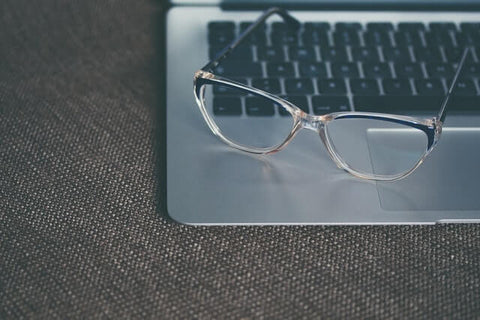Yes, it’s not just older people who get bifocals for reading and other tasks, although they are usually prescribed for presbyopia or age-related farsightedness. This is a prevalent condition that many people will end up self-diagnosing.
Why Bifocals Are Great & Worth Trying
You probably know a couple of things about bifocals—that your grandparents wear them and that Ben Franklin invented them. Are those two things true? Absolutely. However, bifocals are more than just glasses for the elderly. You might be surprised to learn that plenty of younger adults use bifocals for reading glasses, for one thing.
Yes, it’s not just older people who get bifocals for reading and other tasks, although they are usually prescribed for presbyopia or age-related farsightedness. This is a prevalent condition that many people will end up self-diagnosing. Have you ever seen your parents or grandparents holding something at arm’s length when they don’t have their reading glasses? Yup, that’s because they have farsightedness, making it challenging for them to read the small print that’s close to their face.

That’s why bifocals are so great for some people who just need a little help with their near vision. As the name suggests, bifocals actually have two different lenses that help with different types of perception. Most of the lens allows viewing things far away, but a second unique lens focuses on objects close to the viewer. This lens is usually located in the lower half of the frame.
If that makes it sound like bifocals are tricky to use, well, they are at first for many people. The movement between lenses can take an extra split-second of your attention, which is more than you want to give in many cases. You should be careful going downstairs first, as looking down may have you viewing through a different part of the lens. But as you get used to the bifocals, you’ll adjust to the changes and may hardly even notice them anymore. The human body’s ability to adapt is pretty impressive.

But remember, that second lens doesn’t have to be visible. We told you that young people also use bifocals, and you may have been thinking, “Wait a minute, I never see young people wearing the same kind of glasses as my grandpa.” Well, that’s because bifocals don’t have to have that dividing line that makes them easy to pick out. There are also progressive lenses that have a more gradual transition from near to far vision. That gradual transition might be more challenging to get used to for some people, but it hides the fact that they’re wearing bifocals.
And there are also bifocal contacts for those that really don’t like the look or feel of glasses. As you may have guessed, bifocal contacts aren’t for everyone—they can be tough to put in, and some people don’t get vision as sharp as they would like—but they are an option that you can talk about with your eye doctor.

It’s common for someone’s vision to change over their lifetime, and you may notice that you need help with some aspects of it that you didn’t realize when you were younger. That’s why it’s so important to talk with your doctor if you feel something has changed. If you’re looking for prescription sunglasses, you may check out our collection here.

